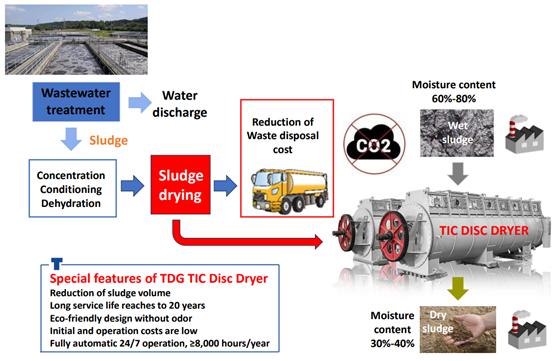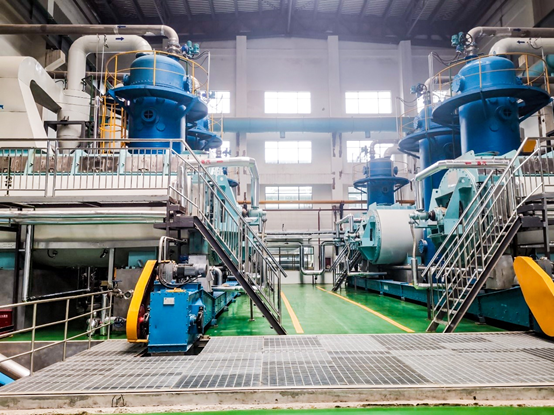

BLOG
Analysis of the Current Situation of Global Sludge Treatment
Analysis of the Current Situation of Global Sludge Treatment
28 July 2025
As global urbanization and industrialization advance, sludge output—by-product of sewage treatment—grows rapidly. Sludge, with complex components including organics, microbes, heavy metals, and pollutants, poses environmental and health risks if mishandled. Understanding global sludge treatment is key for eco-strategies, tech innovation, and resource recycling.
I. Global Sludge Generation Overview
Global sludge output reached 75-100 million tons in 2022, projected to hit 130 million tons by 2030. Developing countries see 8%-10% annual growth due to urbanization and improved sewage facilities. China, a major producer, generated 58 million tons of municipal sludge in 2022 with 63.89 billion cubic meters of urban sewage treated at 98.11%. Sludge output will keep rising with better sewage treatment.
II. Main Sludge Treatment Technologies
(I) Anaerobic Digestion
Widely used in developed nations, it decomposes biodegradable organics into CO₂, methane, and water via anaerobic bacteria. Methane, a clean energy, aids sustainability. Germany treats ~60% of sludge this way, using pre-treatments like high-temperature hydrothermal and ultrasonic methods to boost efficiency by breaking cell structures.
(II) Aerobic Fermentation (Composting)
Aerobic microbes turn sludge organics into stable humus, usable as fertilizer or soil conditioner in agriculture and landscaping. Nations like the U.S., Canada, and EU countries promote it for greening and land remediation. Controlling temperature, humidity, and ventilation is key; odor is managed via biological/chemical deodorization.
(III) Drying Technology
Removes moisture to reduce sludge volume, easing transport and disposal. Dried sludge can be incinerated, landfilled, or used for building materials. Direct drying uses hot flue gas; indirect drying uses heat exchangers. It’s widely used in China’s Yangtze and Pearl River Deltas, where land is scarce.


(IV) Incineration Technology
Achieves sludge reduction and harmlessness, recovering heat. High temperatures oxidize organics, kill pathogens, and fix heavy metals in ash. Japan, with limited land, incinerates ~55% of sludge, using advanced equipment and exhaust systems to meet standards. Ash is used for building materials.
III. National Sludge Treatment Status
(I) Developed Countries
• Germany: Leads in thermal treatment (69.5% in 2017, with 27.93% independent and 37.83% co-incineration). The 2017 "Sewage Sludge Ordinance" mandates phosphorus recovery for plants over 50,000 population equivalents, driving "independent incineration with ash phosphorus extraction". Current independent incineration capacity is 670,000 tons DS/year; planned capacity comes later. The 2015 "Fertilizer Ordinance" restricts sludge land use. Transitional capacity and facilities are needed.
• Japan: Focuses on resource use. Sludge has 80%-90% organics, suitable for energy. 2012 policies support sludge power. ~16% is energy-utilized (13% biogas, 3% solid fuel); building material use (e.g., concrete) dominates. Targets: 30% sludge energy rate by 2020 (achieved), 45% sewage biomass utilization by 2025. Hydrogen energy is a key direction.
• United States: ~5.6 million tons of dry sludge yearly, 60% used in agriculture. Treated sludge becomes nutrient-rich biosolids. Despite opposition, a strict agricultural standard system exists. A 2002 NAS evaluation found no evidence of health risks, recommending EPA revise standards regularly.
(II) Developing Countries
• China: Made progress with a 90% harmless treatment target in the "14th Five-Year Plan" and 2025 land use standards. Over 6 years, 71% new treatment projects use dehydration/drying; 59% of disposal is incineration (45% co-incineration), landfilling down to ~4%. Incineration rises in delta regions. Sludge is used as fertilizer in agriculture and ash for building materials. Challenges: lagging facilities, uneven tech, and funding gaps.
• Other Developing Countries: Limited by economy, funds, and tech, sewage treatment rates are low. Sludge, though less in quantity, lacks treatment. Most is landfilled, stacked, or dumped, polluting soil and water, threatening health in Africa and South Asia. They need more investment and tech to improve treatment.
IV. Global Sludge Treatment Challenges & Strategies
(I) Challenges
• High Costs: Multiple links (collection to disposal) demand heavy investment. Advanced tech and equipment are pricey, burdening developing nations. E.g., modern incineration plants need high initial and operational costs.
• Insufficient Tech Innovation: Each tech has limits: anaerobic digestion is condition-sensitive; composting is space/time-consuming with odor issues; incineration produces dioxins. Resource recovery efficiency is low.
• Strict Environmental Standards: Tighter emission rules for waste gas, water, and residue increase pressure. Limits on dioxins, nitrogen oxides, and heavy metals in ash require better treatment.
• Low Public Acceptance: Fears of odor, noise, and harmful components lead to opposition, hindering project site selection and progress.
(II) Strategies
• Boost Investment & Policies: Governments provide subsidies, tax breaks, and funds. Reasonable charging policies ensure stable income. E.g., tax reductions for innovative enterprises; linkage of sewage and sludge fees.
• Strengthen Tech R&D: Encourage research on new tech like hydrothermal liquefaction and pyrolysis gasification, which convert sludge into bio-oil, gas, and carbon with higher efficiency and less pollution.
• Improve Standards & Supervision: Formulate feasible standards, clarify emission limits, and strengthen monitoring. Online systems track emissions, ensuring compliance.
• Enhance Public Awareness: Educate public via outreach; involve them in decision-
making. Disclose project info and emissions to build trust.
V. Conclusion
Global sludge treatment varies by region. Developed nations advance resource/energy use with tech and funds; developing nations make progress but face challenges. High costs, weak innovation, strict standards, and low public acceptance persist. Global cooperation, more investment, tech innovation, better standards, and public engagement are needed to achieve sludge reduction, stabilization, harmlessness, and resource use, protecting the environment and promoting sustainability.



